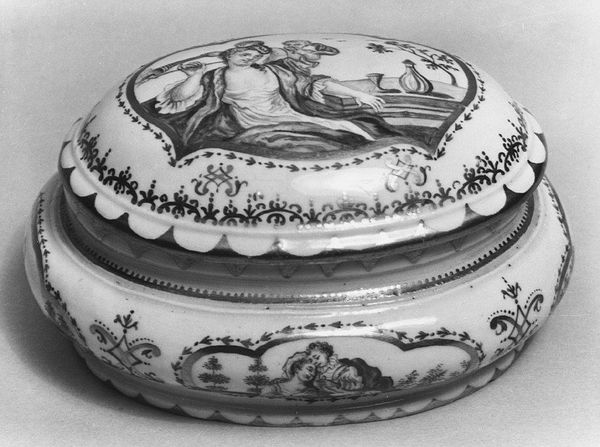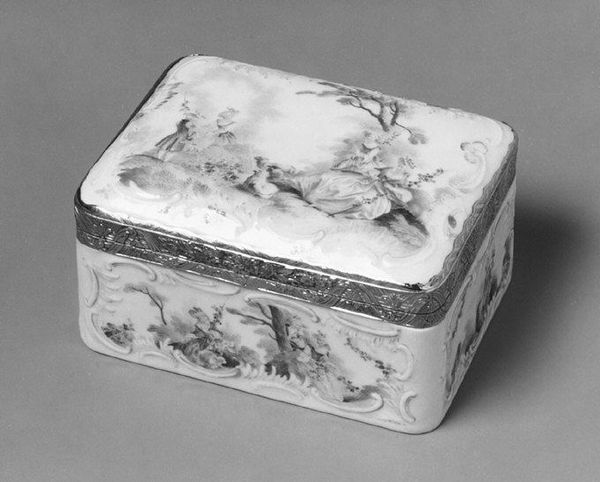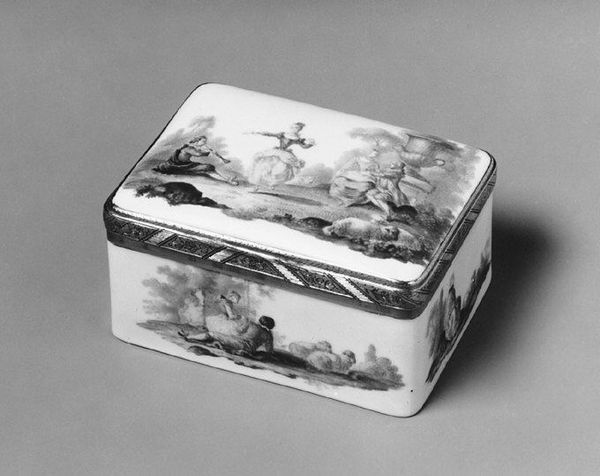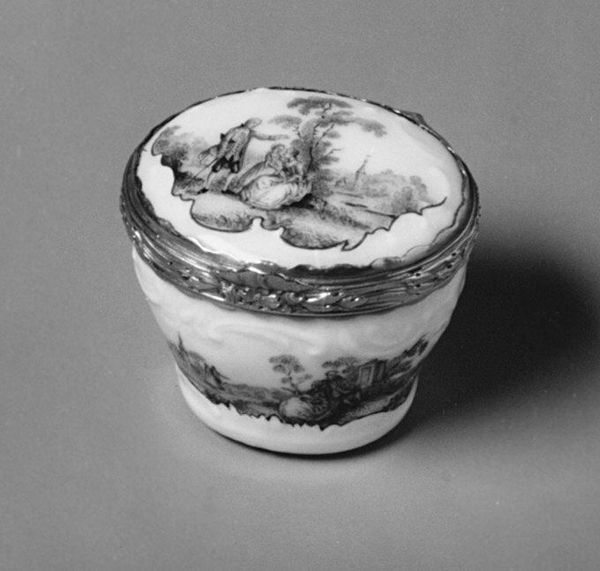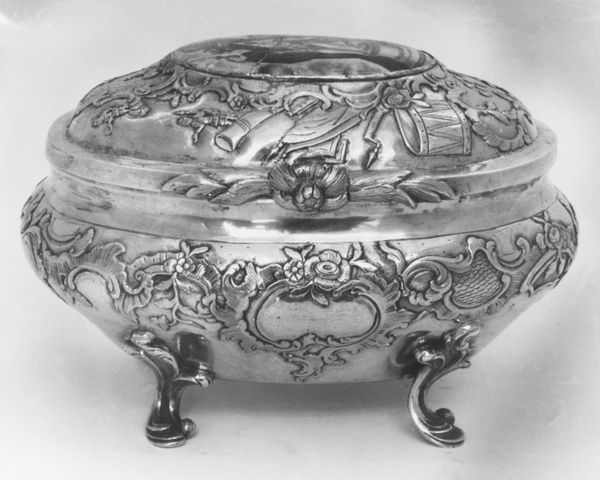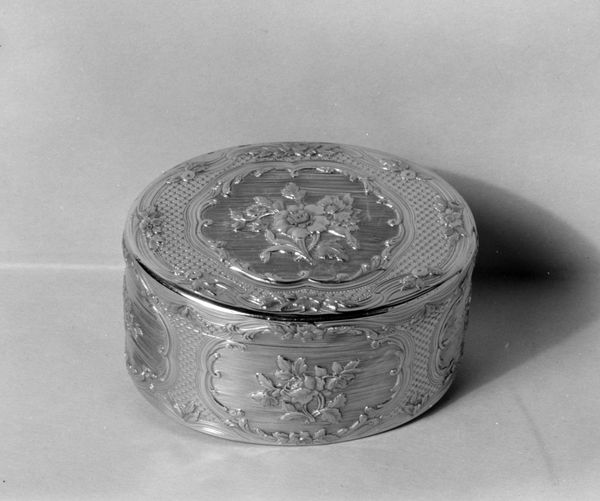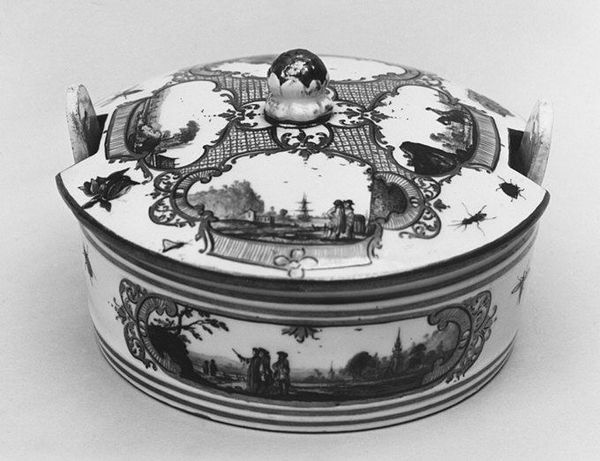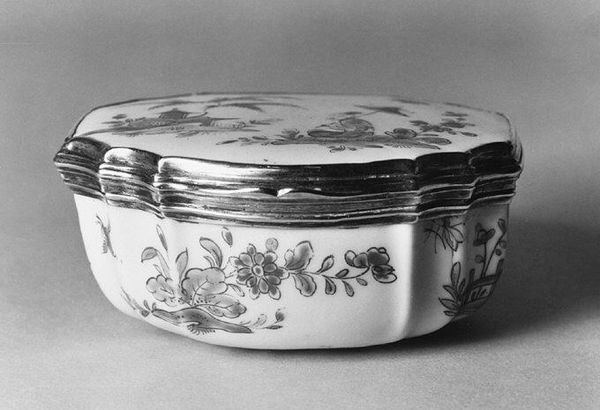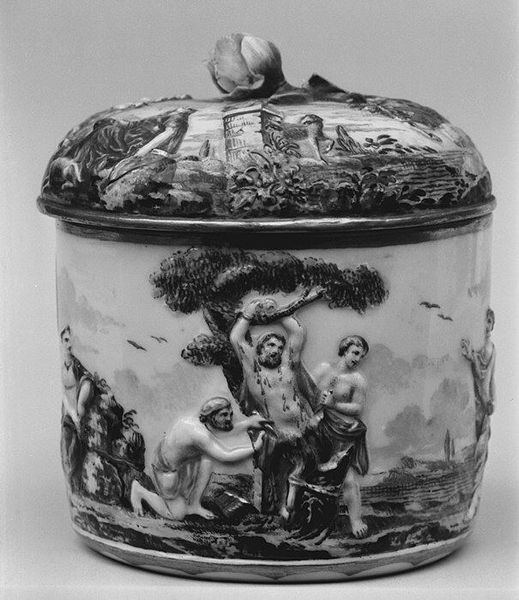
ceramic, porcelain, sculpture
#
landscape
#
ceramic
#
porcelain
#
sculpture
#
decorative-art
#
rococo
Dimensions: 1 5/16 × 2 1/4 in. (3.3 × 5.7 cm)
Copyright: Public Domain
Editor: Here we have a porcelain Snuffbox, dating from 1726 to 1732, made by the Saint-Cloud factory. Its delicate ceramic body is adorned with these charming landscape scenes. I’m immediately drawn to its diminutive size and the incredible detail on such a small surface. What strikes you most about this piece? Curator: It’s compelling to consider this object beyond mere decoration, isn’t it? Look at the materials: porcelain, a highly prized substance mimicked in Europe but perfected through intense labor in Asia and Europe. What does the incorporation of, presumably silver, imply about its status as a commodity for the elite? Editor: It speaks to exclusivity, definitely, hinting at a very specific social circle consuming both the tobacco within and the object itself. But the landscapes seem almost whimsical compared to the seriousness of luxury materials. Curator: Exactly. But that 'whimsy' is itself a crafted aesthetic, carefully produced for a specific market. These miniature landscape decorations naturalize privilege, don't you think? Consider the level of skill required by the porcelain workers at Saint-Cloud to translate the silver or landscape designs into ceramic paintings. What can we read into this division of specialized labor? Editor: It highlights a rigid social structure, doesn’t it? The craftspeople, despite their artistry, remained largely anonymous laborers, while the patrons reaped social benefit. The landscape decoration seems almost secondary to the actual display of wealth and access to these finely crafted objects. Curator: Precisely. This box transforms tobacco, a plant circulating globally due to colonial ventures, into an aesthetic object representative of European aristocracy. A tiny little world encapsulates broader processes of labor, consumption, and social distinction. Editor: It really reframes how I see these decorative pieces. I never considered how deeply connected their creation was to social structures. Curator: Understanding art's relationship to its means of production truly enriches our perspective, wouldn't you agree?
Comments
No comments
Be the first to comment and join the conversation on the ultimate creative platform.
